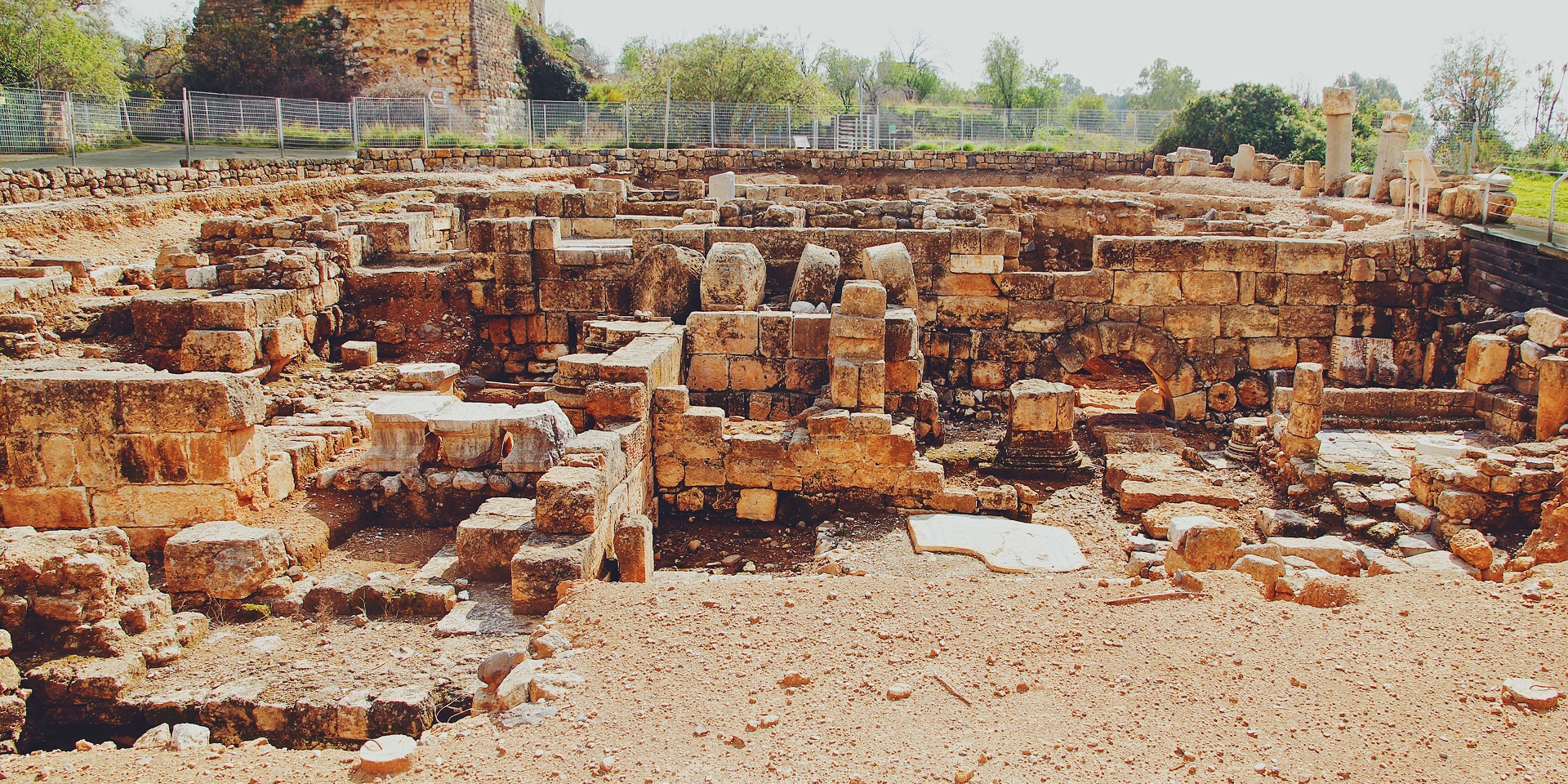On May 23, 2012, the Israel Antiquities Authority announced the discovery of a 1.5 cm piece of clay, which represents the oldest extra-biblical attestation of the town of Bethlehem. Eli Shukron, the coordinator of the excavation work, believes that we are dealing with a bulla from the 7th-8th centuries B.C., probably used for sealing a document or object.
The reconstruction of the text, according to Eli Shukron, is as follows:
טעבשב Bishv’at (in the seventh)
םחל תב Bat Lechem (Bethlehem)
ךלמל Lemelekh (for the king)
In the 7th year of the king (it is not clear if this refers to Hezekiah, Manasseh, or Josiah) a shipment was sent from Bethlehem to the king of Jerusalem.
This discovery from the archaeological site in the City of David, Jerusalem, brings back into discussion a rather controversial topic, namely the role, importance, and relevance of archaeological discoveries[1] in relation to the biblical text. The remains of the past are few and incomplete, therefore, any archaeological discovery is precious. The Bible is part of history, and the study of ancient vestiges, on the one hand, provides an (external) confirmation of the information contained only in the sacred writings. On the other hand, it provides the possibility of a broader understanding of the context in which the events evoked by the Bible happened.
Overshadowed by a critical spirit
The critical spirit specific to rationalism that dominated the Age of Enlightenment (17th-19th centuries) caused the Bible to be regarded with increasing distrust. Many of the accounts and narratives of the Bible began to be regarded as legends or folktales without much historical significance. In this way, the existence of many biblical characters, such as the patriarchs, Moses, or even some of the prophets, came to be questioned.
In general, it was considered that the Holy Scriptures could not be accepted as historical authority, because the text of the holy book was assumed to be the product of late drafting, which implied that the historical information in the Bible is distorted and inaccurate. Much of the criticism was based on the lack of external evidence to support certain biblical claims.
Furthermore, it was considered that the Bible, being a religious writing, tends to contain expressions in a mythological language, specific to pre-scientific thinking, meaning they are not that accurate. For this reason, details of a historical nature were largely criticised or, at best, dismissed as irrelevant.
This critical attitude towards the Bible has been perpetuated until modern times, so the historicity of the Bible’s accounts continues to be questioned. Bertrand Russell (1872-1970), the famous sceptical thinker, writes in his popular book A History of Western Philosophy: “The early history of the Israelites cannot be confirmed from any source outside of the Old Testament, and it is impossible to know at what point it ceases to be purely legendary.”[2]
In 1974, Thomas L. Thompson, Old Testament professor at the University of Copenhagen, published a book provocatively titled The Historicity of the Patriarchal Narratives, in which he attempted to re-examine, from a critical perspective, the Genesis narratives in relation to archaeology. Emblematic of the position of critics stuck in an anti-biblical attitude is Thompson’s following statement: “Not only has ‘archaeology’ not proven a single event of the patriarchal traditions to be historical, it has not shown any of the traditions to be likely.”[3]
However, Professor Thompson makes a surprising and serious logical error, right from the start: the absence of proof does not mean the proof of absence. How many real people whose existence cannot be proven with historical evidence actually lived? Billions of anonymous ancestors lived without their existence being substantiated by archaeological evidence. On the other hand, what archaeological traces could a nomad like Abraham leave? But what is most surprising is the last part of Thompson’s statement: it betrays either a shameful ignorance or a tendentious disregard for the evidence.
Archeology says otherwise
Here are some examples which show that the stories about the life of the patriarchs fit into the cultural context of the time.
The city of Nuzi was the administrative centre of the Horites,[4] a people also mentioned in the Old Testament. The excavations were conducted by an American team between 1925 and 1933. The major discovery, with implications for the understanding of biblical texts, was that of a family archive spanning six generations (approximately 1450-1350 BC). In the documents belonging to these archives, details were found about the social, economic, religious, and legal system of the Horites.
Contrary to Thompson’s claims, the Nuzi tablets recall practices similar to those reported in the Bible, such as: adopting the child of a handmaiden (as in the case of Abraham in Genesis 15:2), the rules regarding inheritance (Genesis 25:29), the marriage ritual (Genesis 28), or the practice of levirate (Genesis 38; Deuteronomy 25:5).
A practice mentioned by the documents from Nuzi, which attracted the attention of biblical researchers, was that of the adoption of a woman as a sister by her husband. It seems that, in Horite society, a woman enjoyed greater protection when she had the legal status of “sister.” Therefore, two different documents were issued, one certifying the status of wife, and another certifying the status of sister. This could facilitate a clearer understanding of the biblical passages in which both Abraham (Genesis 12:10; 20:1) and Isaac (Genesis 26:7) had wives which also had the status of sisters.
Another discovery that supports the biblical accounts comes from roughly the same geographical area. In 1933, in the eastern part of Syria, on the border with Iraq, 11 kilometres northwest of the current Abu Kamal, some Bedouins were digging in a mound, for the stone needed for a funerary monument.
The men discovered a headless statue, which got the attention of the French authorities who controlled Syria at the time. It was decided that the area would be excavated under the supervision of a specialist, an archaeologist from the Louvre. In this site, the largest collection of tablets (more than 25,000) would be discovered, which would remain known as the “Mari tablets.”
They provided many details and new information that helped in understanding Sumerian culture. It seems that most of the documents dated from 1800-1750 BC. These documents would also come to the attention of Bible researchers, because they confirmed practices similar to those mentioned both in the Horite documents (the Nuzi tablets) and in the book of Genesis (the period of the patriarchs).
Contrary to critics’ claims, archaeological discoveries confirm the historical credibility of the Bible’s accounts, providing a clearer understanding of the context in which the patriarchs lived. Moreover, in light of the archaeological discoveries, the patriarchs, far from being legendary characters, prove to be, indeed, people of their times.
The Bible confirmed, criticism refuted
It was believed in the past that the Hittites referred to in the Bible were nothing more than a figment of the imagination, because history had not recorded anything about them. That was until 1906, when Hugo Winckler began excavation work near a village in present-day Turkey: Boğazköy. The remnants of the old Hattusha fortress, the capital of the powerful Hittite Empire, would be discovered here.
King Belshazzar was considered to be only an imaginary figure, because apart from the reference in Daniel 5, no other document referred to him. According to historical data, the last Babylonian emperor was Nabonidus—except that archaeology would shed light on this as well. The discovery of the “Nabonidus cylinder” would confirm the existence of the controversial Belshazzar, son of Nabonidus, co-regent with his father.
Places once considered legendary have eventually been archaeologically attested. An example is Ophir, famous in the Bible for its gold. In 1956, in Tell Qasile (north of Tel Aviv, Israel), a small piece of ostracon (inscribed pottery) was discovered, and the following words were inscribed on it: “Gold of Ophir for Beth-Horon, 30 shekels.” Since then, Ophir had to be removed from the list of “imaginary” places.
In 1993, archaeologists at Tel Dan, in northern Israel, made a remarkable discovery. Beyond the gate of the fortress, a basalt stone reused for a wall was discovered. After the volunteer turned the stone, he noticed an inscription on it. The archaeologist and a linguist later published the text, which mentioned a victory by the Aramean king Ben-Hadad, who boasted that he had defeated “the House of David” and “the House of Israel.”
The inscription was dated, based on the type of writing, back to approximately 850 BC. Its importance is given by the fact that it mentions, for the first time, the name “David.” The name is used here in the context of a reference to the “House of David,” a dynastic name from Judas, also used in the Bible (1 Kings 12:26; 14:8; 2 Kings 17:21). It would of course make no sense to name a dynasty after someone who did not exist.
Who needs archaeology?
So, why do we need archaeological discoveries to support the Bible after all? From a theological perspective, the Bible does not need external support. For a believer it is in itself an authority (being the manifestation of divine revelation), but, in the context in which the accusations of the critics refer to the historical realm, here the archaeological discoveries can be invoked as proof.
The famous William F. Albright, a prominent figure in the field of biblical archaeology in the 20th century, stated: “Discovery after discovery has established the accuracy of innumerable details, and has brought increased recognition to the value of the Bible as a source of history.”[5] Archaeological discoveries become evidence in the context of criticism of the Bible. This way, archaeology can be used, first of all, to prove that the events, places, or characters described in the Bible are real and historical. Archaeology is a tool that confirms the accuracy of the details provided by the Bible at a historical level.
Secondly, archaeological discoveries “throw some light, directly or indirectly on the Bible.”[6] Archaeology, as part of historical studies, helps us understand the biblical framework. Parallels between biblical information and the data provided by archaeological discoveries show that the so-called anachronisms or legendary exaggerations are correct details from a historical point of view.
Thirdly, the archaeological discoveries offer a clearer picture of a long-ago world—they bring information about the languages spoken then, about the life and customs of the peoples described, and about their philosophical, ethical, or religious conceptions.
What archaeology does and doesn’t do
Archaeology, however, cannot fully explain the Bible. Although it appeared in the world back then, the Bible does not belong to that world. Its spiritual values are much richer and deeper and, despite the similarity with those of the surrounding peoples, it far surpasses them.
Certifying the historical accuracy of the Bible does not directly prove its divine origin, but it clearly shows that the arguments used against the Bible are sometimes unfounded or at least insubstantial. The plethora of archaeological discoveries that are a confirmation of the Bible should have given even greater credibility to the biblical text, but this did not happen. Critics today have maintained the same attitude, despite the fact that archaeological evidence has dismantled many anti-biblical assumptions.
The critical attitude towards the Bible (despite archaeological confirmation) betrays an unfounded and unnatural anti-religious bias, because, contrary to common practice, critics proceed from the “presumption of guilt.” The Bible is viewed from the start as being erroneous (and automatically irrelevant), being “obliged” to defend its authenticity. This malicious attitude persists despite evidence to the contrary.
This shows that the real issue that needs to be discussed is not that of evidence, but that of the assumed positions. What is clear so far is that there is no archaeological discovery that clearly proves that the Bible is wrong (at least from a historical perspective). So, why does this attitude of criticism against the Bible persist, even though the accusation has been proven to be unfounded?




















